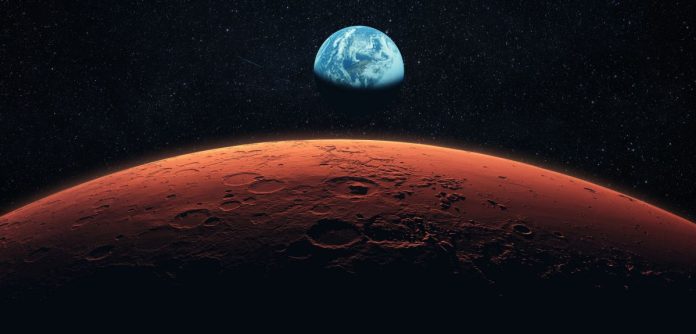Scientists have found that artificial intelligence (AI) could speed up the search for extraterrestrial life by identifying the most promising locations to explore. In a new study, researchers demonstrated that AI and machine learning methods can support the search for life by identifying hidden patterns within geographical data that could indicate the presence of life. The study analysed the Pajonales basin, a four-million-year-old lakebed in the Atacama Desert that is one of the closest analogues to the Martian environment on Earth. The researchers collected over 7,700 images and 1,150 samples, using various instruments to test for the presence of photosynthetic microbes living within the salt domes, rocks, and alabaster crystals that make up the basin’s surface. Biosignature markers were also detected. The combined dataset was used to train convolutional neural networks to predict which macro- and microhabitats were most strongly associated with biosignatures. The model demonstrated high predictive capability for the presence of geological materials strongly likely to contain biosignatures in aerial images and ground-based centimetre-scale data.
Artificial Intelligence Could Accelerate Search for Extraterrestrial Life
According to a new study published in Nature Astronomy, artificial intelligence (AI) could significantly speed up the search for extraterrestrial life by identifying the most promising locations to explore. With few opportunities to collect samples from Mars or other planets, missions must target areas with the best potential for harbouring life. In the study, researchers used AI and machine learning methods to detect hidden patterns in geographic data that could indicate the presence of life.
Led by Dr Kimberley Warren-Rhodes at the SETI Institute and involving an international team of over 50 researchers, the study began with an ecological survey of a 3 km² area in the Salar de Pajonales basin, which mapped the distribution of photosynthetic microorganisms. The researchers used techniques such as gene sequencing and infrared spectroscopy to uncover distinct markers of life, known as ‘biosignatures.’ They combined this data with aerial images captured by drones to train a machine learning model to predict which macro- and microhabitat types would be associated with biosignatures that could indicate life.
When tested with data on which it was not trained, the model was capable of detecting biosignatures up to 87.5% of the time, compared to only 10% when searching randomly. This reduced the search area needed to find a positive result by up to 97%. Ultimately, similar models could be used to guide rovers exploring planets to the locations most likely to contain signs of life.
Dr Freddie Kalaitzis from the University of Oxford’s Department of Computer Science, who led the application of machine learning methods to microhabitat data, said: ‘This work demonstrates an AI-guided protocol for searching for life on a Mars-like terrestrial analogue on Earth. This protocol is the first of its kind trained on actual field data, and its application can in principle generalise to other extreme life-harbouring environments. Our next steps will be to test this method further on Earth with the aim that it will eventually aid our exploration for biosignatures elsewhere in the solar system, such as Mars, Titan and Europa.’
Artificial Intelligence and Drones Used to Study Martian-like Environment on Earth
Scientists have used artificial intelligence (AI) and drone technology to study a four-million-year-old lakebed in the Atacama Desert in South America, which is considered one of the closest analogues to the Martian environment on Earth. The inhospitable high-altitude (3,541 m) basin, known as the Pajonales, experiences high levels of ultraviolet radiation, hypersalinity and low temperatures, similar to the evaporitic basins of Mars.
For the ecological survey, the researchers collected over 7,700 images and 1,150 samples from the basin, using various instruments to test for the presence of photosynthetic microbes living within the salt domes, rocks, and alabaster crystals that make up the surface. Biosignature markers, including carotenoid and chlorophyll pigments, which could be seen as orange-pink and green layers, respectively, were also detected.
The images collected by the drones were combined with ground sampling data and 3D topographical mapping to classify regions into four macrohabitats and six microhabitats. Statistical analysis revealed that the microbial organisms across the study site were not randomly distributed, but clustered in distinct regions, which could be attributed to water availability rather than other environmental variables such as nutrient or light availability.
The combined dataset was used to train convolutional neural networks to predict which macro- and microhabitats were most strongly associated with biosignatures. The model demonstrated high predictive capability for the presence of geological materials strongly likely to contain biosignatures in aerial images and ground-based centimetre-scale data.
The research team intends to test the model’s ability to predict the location of other harsh ecosystems, such as ancient stromatolite fossils, hot springs, and permafrost soils. The data from these studies will help inform and test hypotheses on the mechanisms that living organisms use to survive in extreme environments.
‘Our study has once again demonstrated the power of machine learning methods to accelerate scientific discovery through its ability to analyse immense volumes of different data and identify patterns that would be indiscernible to a human being,’ said Dr Kalaitzis. ‘Ultimately, we hope the approach will facilitate compilation of a databank of biosignature probability and habitability algorithms, roadmaps, and models that can serve as a guide for exploration on Mars.’
Don’t miss interesting posts on Famousbio
